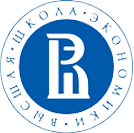In early January, the Kazakh Ministry of Education stated that the confiscated property of officials that is proceeds of corruption and other associated crimes was used to build 43 schools in 2023. This mechanism of transfer of funds confiscated from the corrupt to the State was established last summer: the money goes to the dedicated account of the Ministry of Finance and is subsequently spent on needs of society, inter alia, through the Education Infrastructure Support Fund. All in all, the project envisages the construction of 62 educational facilities.
The use of assets confiscated from the corrupt to support social programmes (often called “social reuse of assets” in the literature) is not a brand new approach and was actually adopted by a number of countries quite some time ago.
For instance, since 1990s Italy has been using the assets confiscated from the mafia, including proceeds of corruption, for social purposes. The National Agency for the Administration and Destination of Assets Seized and Confiscated from Organized Crime (Agenzia nazionale per l’amministrazione e la destinazione dei beni sequestrati e confiscati alla criminalità organizzata, ANBSC) is responsible for the distribution of these assets; additionally, in 1995 Libera, not-for-profit organisation, was founded to ensure interaction between the ANBSC and other stakeholders (associations, social cooperatives, foundations etc.) with the aim to reinvest confiscated assets in different social projects.
The following initiatives among those implemented to date can be highlighted:
- Libera Terra (“free land” in Italian), a project of social cooperatives that consists in the reuse of territories confiscated from the mafia for farming, as well as the management of the Café de Paris in Rome that sells the products produced by Libera Terra;
- Talento & Tenacia (“talent and tenacity” in Italian), space that replaced a villa illegally built by the mafia and subsequently renamed Palestra della Legalità (“gymnasium of freedom”) hosting meetings, conferences and educational events primarily those associated with sports; particular attention is paid to providing people with mental disabilities with free activities;
- A centre for women victims of violence, a centre for integrating legal immigrants and hosting women victims of human trafficking; housing for single mothers and women affected by social hardships.
All information on the use of confiscated assets can be consulted here.
Under the Proceeds of Crime Act (POCA), the United Kingdom allocates a part of the value of recovered assets to the local communities for redistribution (for example, through the South Yorkshire Police and Crime Commissioner, the Safer City Partnership in London, the Youth Fund in Cambridgeshire and Peterborough etc.), initiatives to counter crime and public security: the funding is usually allocated in the form of grants on a competitive basis to activists, community groups, volunteers, schools, charity organisations and the like.
Since 2008 Scotland has had its own programme entitled CashBack for Communities that provides for the reinvestment of criminal assets confiscated under the POCA in public initiatives to improve the quality of life of the youth. It is already the 6th phase of the programme that is currently underway (from 1April 2023 to 31 March 2026) that implies the funding of initiative, for instance, in the form of training or sports activities for young people aged between 10 and 25, especially those who are particularly subject to the risk of asocial behaviour, offending (re-offending) and belonging to the communities most affected by crime.
Australia’s similar 1987 Proceeds of Crime Act allows the Government to use confiscated assets associated with criminal activities to support different social projects. Under the Act, the assets and/or the proceeds thereof can be reallocated for needs of society by financing the programmes focused on:
- Crime prevention;
- Law enforcement;
- Drug addiction treatment;
- Fight against illicit drug use.
The Attorney-General’s Department coordinates the allocation of relevant grants.
Some countries have more recent experience in developing such mechanisms. For example, since 2018 Albania has carried out the EU-funded Confiscated Assets Used for Social Experimentation (C.A.U.S.E.) initiative in the framework of which three social enterprises have already been established with the use of the proceeds of assets confiscated from the organised crime in Fier, Durrës and Sarandë:
- KeBuono Social Pastry, 75% of the personnel of which are young people, girls and women at risk or victims of crimes;
- KinFolk Coffee Library, which is a multifunctional centre where the young people particularly subject to the risk of being involved in illegal activities can meet, participate in any of the multiple trainings, learning courses, social and cultural events or simply spend their free time;
- Social Crafting Garage, where women and girls victims of organised crime and domestic violence or at risk make handcrafts from natural beach stones.
The property confiscated has also been used here to support drug addicts, victims of human trafficking, as well as young people and women; in some cases the vehicles confiscated from criminals have been transformed into mobile libraries.
In a number of other countries despite the possibility provided for by the law to allocate confiscated assets to socially important initiatives, relevant practice is either absent or counts a couple of isolated projects. In 2018 for instance, the National Association of Parents of Children with Cancer (NURDOR) in Serbia received the funding to transform the building confiscated from criminals into a treatment centre in Novi Sad, where the children with cancer can stay with their families during their treatment period; however, in spite of the fact that the necessary legal grounds are in place, no funds have been allocated to any other projects so far.
To sum it up, the allocation of confiscated assets, including proceeds of corruption crimes, to needs of society is a form of disposal of such assets used by governments in different countries with the initiatives funded with the use of confiscated assets being prevalently aimed at preventing crime and supporting public security. The experts of the Stolen Asset Recovery Initiative stress in a publication that this mechanism is needed to showcase that the valuables which criminals deprive society of will be confiscated from them and given back to society thanks to the rule of law.

